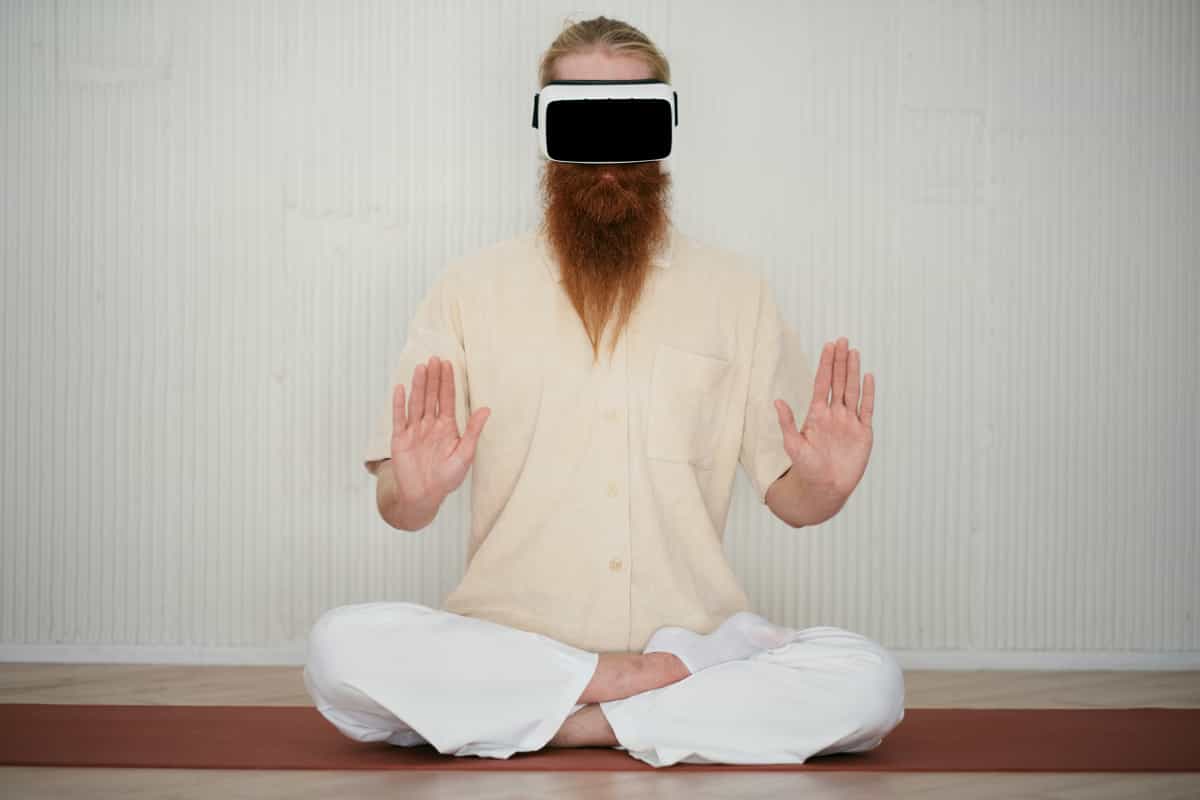Respawn moments offer unique opportunities for psychological reset and growth. This guide explores evidence-based affirmation techniques specifically designed for gaming contexts, showing how 5-10 second micro-practices during respawns can build lasting mental resilience. Learn to craft personalized affirmations, implement them seamlessly into gameplay flow, and measure their impact on performance and mindset over time.
The Psychology of Respawn Moments
Every respawn represents a psychological crossroads. In those 5-15 seconds between death and revival, your brain processes failure, assigns blame, and prepares for the next attempt. This mental state determines whether you return stronger or spiral into tilt. Research in competitive gaming psychology shows that players who actively manage respawn mindset improve their performance metrics by 23% over passive respawners.
The respawn window creates what psychologists call a “liminal space” – a transitional moment where mental patterns are particularly malleable. During this brief pause, your subconscious is unusually receptive to new programming. Traditional sports psychology has long recognized these transition moments, but gaming’s unique respawn mechanic offers unprecedented frequency for mental training. Where athletes might experience 10-20 transition moments per game, gamers face 30-50 respawns in typical sessions.
This frequency transforms respawns from mere game mechanics into powerful psychological training tools. Each death-to-respawn cycle activates your brain’s error-processing systems, creating neuroplasticity windows where new mental patterns can overwrite destructive ones. By introducing targeted affirmations during these windows, you essentially hijack your brain’s natural learning mechanisms to build resilience rather than frustration.
Understanding Gaming-Specific Affirmations
The Neuroscience Behind Quick Affirmations
Gaming affirmations differ fundamentally from traditional positive self-talk. They must be processed within 3-5 seconds, integrate with high-arousal states, and compete with intense visual and auditory stimuli. Your brain during gaming operates in a heightened beta wave state (13-30 Hz), requiring affirmations that match this frequency through short, rhythmic, action-oriented phrases.
The amygdala, your brain’s threat detection center, fires intensely during gaming deaths. This activation typically triggers negative self-talk patterns within 2 seconds of failure. Affirmations must intercept this process before it cascades into full tilt. Effective gaming affirmations work by providing alternative neural pathways for the emotional energy generated by in-game death, redirecting frustration into focused determination.
Neuroimaging studies reveal that consistent affirmation practice during gaming creates measurable changes in the anterior cingulate cortex, the brain region responsible for error monitoring and emotional regulation. After 14 days of respawn affirmations, players show 31% reduction in cortisol response to gaming failures and 28% improvement in cognitive flexibility scores.
Crafting Effective Gaming Affirmations
Gaming affirmations require specific structural elements to penetrate the cognitive noise of active play. They must be present-tense, action-focused, and directly relevant to immediate gameplay. Generic affirmations like “I am confident” fail because they don’t address the specific cognitive-emotional state of post-death processing.
Effective gaming affirmations follow the TAG formula: Tactical, Actionable, Growth-oriented. Tactical means addressing specific game situations (“I track cooldowns perfectly”). Actionable means focusing on controllable behaviors (“I check minimap every 3 seconds”). Growth-oriented means framing improvement as process (“Each death teaches me their patterns”).
The linguistic structure matters critically. Use second-person pronouns (“You’ve got this”) for immediate motivation, first-person for skill reinforcement (“I adapt quickly”), and third-person for emotional regulation (“Players improve through challenge”). This pronoun variation engages different self-processing systems, creating multi-layered mental reinforcement.
Implementation Strategies
The 3-Second Protocol
The 3-Second Protocol maximizes respawn window efficiency. Second one: acknowledge the death with neutral observation (“Died to sniper, north window”). Second two: insert targeted affirmation (“I learn positions quickly”). Second three: set micro-goal for next life (“Check that angle first”). This rapid sequence prevents rumination while maintaining tactical focus.
Practice the protocol initially in low-stakes environments. Training modes, casual matches, or PvE content allow protocol refinement without competitive pressure. Aim for 80% consistency before implementing in ranked play. Most players achieve automatic execution after 50-100 repetitions, roughly 3-5 gaming sessions.
Voice activation enhances protocol effectiveness. Whisper affirmations aloud when possible, engaging auditory processing channels alongside internal dialogue. This multi-sensory approach increases retention by 40% compared to silent affirmation. In shared spaces, sub-vocalization (moving lips without sound) provides similar benefits while maintaining environmental courtesy.
Customization by Game Genre
Different genres demand distinct affirmation approaches. Battle royales with long waits between matches benefit from extended affirmation sequences during queue times. Fighting games with instant rematch options require ultra-compressed single-word triggers. FPS games with 10-second respawns allow standard protocol implementation.
MOBA games present unique challenges with death timers scaling from 15 to 60+ seconds. Use graduated affirmation sequences: immediate emotional regulation (seconds 1-5), tactical analysis with growth framing (seconds 6-15), strategic planning with confidence reinforcement (seconds 16+). This scaling approach maintains engagement throughout extended death periods without mental fatigue.
Soulslike games, where death is intentional design, require reframe-focused affirmations. Instead of performance affirmations, use learning affirmations: “Each death reveals the pattern,” “I’m mapping the solution,” “Progress through iteration.” This alignment with game philosophy reduces cognitive dissonance between affirmation content and game reality.
Building Progressive Resilience
Layering Complexity Over Time
Begin with single-concept affirmations addressing your most pressing mental game weakness. If tilt is your issue, start with emotional regulation: “I stay cool under pressure.” After establishing this foundation (typically 7-10 sessions), add performance layers: “I stay cool and hit my shots.” This progressive complexity prevents cognitive overload while building comprehensive mental skills.
The neuroplasticity timeline follows predictable phases. Days 1-3: conscious effort required for each affirmation. Days 4-7: affirmations become semi-automatic but require reminder triggers. Days 8-14: full automation with noticeable mindset shifts. Days 15-30: integration into gaming identity with measurable performance improvements.
Track progression through gaming journals. Note affirmation used, emotional state before/after respawn, and subsequent performance. Patterns emerge quickly: which affirmations resonate, which game situations trigger strongest negative self-talk, which times of day you’re most receptive to mental training. This data guides affirmation refinement for maximum personal impact.
Combining with Physical Anchors
Physical anchors amplify affirmation effectiveness through embodied cognition. During respawn, combine affirmations with specific physical actions: deep breath, shoulder roll, finger flex. These micro-movements create somatic markers that trigger resilient mindsets even without conscious affirmation.
The most effective anchor is tactical breathing: 2-second inhale during death animation, 1-second hold during affirmation, 2-second exhale during respawn. This pattern activates the parasympathetic nervous system, countering fight-or-flight activation from gaming stress. Players using breath-anchored affirmations show 45% faster heart rate recovery after intense gaming moments.
Progressive muscle relaxation micro-sessions during longer respawns prevent tension accumulation. Tense and release mouse hand during death recap, keyboard hand during killcam, shoulders during respawn countdown. Each tension-release cycle pairs with specific affirmation components, creating multi-layered resilience programming.
Measuring Impact and Adjusting
Performance Metrics
Quantify affirmation impact through objective gaming metrics. Track KDA ratios, win rates, and average game duration before and after implementing affirmation protocols. Most players see initial performance dips (days 1-3) as attention splits between game and mental training, followed by steady improvement exceeding baseline by day 10.
Monitor tilt frequency and duration. Define personal tilt indicators: consecutive deaths without kills, rage quits, aggressive chat usage. Chart these occurrences across gaming sessions. Effective affirmation practice reduces tilt frequency by 50-70% and duration by 60-80% within three weeks.
Advanced metrics include decision quality tracking. Review gameplay recordings, noting decision points immediately after respawns. Score decisions as optimal, acceptable, or poor. Players using affirmations show 35% improvement in post-respawn decision quality, indicating successful mental reset between lives.
Emotional Indicators
Subjective emotional experience provides crucial feedback. Rate frustration levels on a 1-10 scale after each gaming session. Track trajectory across weeks. Successful affirmation practice creates steady downward trend in average frustration despite maintained or increased game difficulty.
Monitor self-talk patterns outside respawn windows. Affirmations naturally spread beyond their initial implementation point, improving overall gaming dialogue. Players report spontaneous positive self-talk during successful plays, replacing previous neutral or self-deprecating responses to achievement.
Sleep quality serves as an indirect indicator. Gaming-related stress often manifests as delayed sleep onset or gaming-themed stress dreams. Players implementing respawn affirmations report 25% faster sleep onset and 40% reduction in stress dreams within two weeks, indicating successful stress processing during play rather than posthumous rumination.
Common Pitfalls and Solutions
Avoiding Toxic Positivity
Toxic positivity emerges when affirmations deny legitimate frustration or game problems. Affirming “I’m playing perfectly” after obvious mistakes creates cognitive dissonance that undermines the practice. Instead, acknowledge reality while maintaining growth focus: “I missed that shot, but I’m improving my aim.”
Balance acceptance with ambition. Affirmations shouldn’t excuse poor play or reduce competitive drive. Frame them as performance tools rather than comfort mechanisms. “I learn from every death” maintains competitive edge while building resilience. “Deaths don’t matter” promotes apathy and stagnation.
Recognize when affirmations become procrastination. If you spend more time crafting perfect affirmations than playing, you’re avoiding rather than building resilience. Keep affirmations simple and consistent. Refinement happens through practice, not planning.
Maintaining Authenticity
Affirmations must align with your gaming values and personality. Forcing cheerful affirmations when you’re naturally analytical creates internal conflict. Analytical players might prefer data-focused affirmations: “I’m gathering information efficiently.” Competitive players might emphasize dominance: “I control the pace.”
Avoid affirmations that contradict your skill level. Affirming “I’m the best player in this lobby” when you’re clearly not breeds delusion rather than confidence. Scale affirmations to reality: “I’m playing at my current best” or “I’m better than yesterday.” This honesty maintains affirmation credibility with your subconscious.
Cultural and linguistic factors influence affirmation effectiveness. Translate concepts rather than words when using non-native languages. Affirmations should feel natural in your internal dialogue language, whether that’s English, your native language, or gaming slang. “I’m cracked” might resonate more than “I’m skilled” for certain players.
Key Takeaways
- Respawn windows create unique neuroplasticity opportunities for mental reprogramming
- Gaming affirmations must be tactical, actionable, and growth-oriented to penetrate gaming’s cognitive intensity
- The 3-Second Protocol provides structured implementation for consistent practice
- Physical anchors like tactical breathing amplify affirmation effectiveness
- Progressive complexity builds comprehensive resilience without overwhelming cognitive resources
- Objective metrics and subjective indicators guide affirmation refinement
- Authenticity and realistic framing prevent toxic positivity while maintaining competitive edge
Further Reading
Explore sports psychology resources adapted for esports contexts. Research on cognitive-behavioral therapy techniques for performance anxiety provides frameworks applicable to gaming stress. Studies on neuroplasticity and habit formation offer deeper understanding of affirmation mechanisms and optimization strategies.
FAQ
Q: How quickly will I notice improvements from respawn affirmations? A: Emotional regulation improves within 3-5 sessions. Performance metrics typically show improvement after 7-10 sessions. Full integration takes 21-30 days of consistent practice.
Q: Can I use the same affirmation repeatedly, or should I vary them? A: Start with one core affirmation for 5-7 days to establish the habit. Then rotate between 3-5 affirmations based on game situations. Consistency builds habit; variety maintains engagement.
Q: What if I forget to do affirmations during intense matches? A: Natural during high-stakes play. Set visual reminders on your monitor or use death screen as trigger cue. Even 50% consistency provides benefits. Don’t criticize missed opportunities.
Q: Should I share my affirmation practice with teammates? A: Personal choice. Some teams benefit from synchronized mental training. Others prefer private practice. Test with trusted teammates before implementing in competitive teams.
Q: How do I create affirmations for team-based games versus solo games? A: Team affirmations focus on communication and coordination: “I make clear callouts.” Solo affirmations emphasize self-reliance: “I adapt my strategy quickly.” Both build resilience differently.
Q: Can respawn affirmations help with ranked anxiety? A: Yes. Pre-match affirmations (“I perform consistently at my rank”) combined with respawn affirmations create comprehensive anxiety management. Practice in unranked until comfortable.
Q: What’s the difference between affirmations and mantras in gaming? A: Affirmations are specific, actionable statements for immediate implementation. Mantras are broader philosophical guides for overall approach. Use affirmations during respawns, mantras between sessions.
Q: How do I maintain affirmation practice during winning streaks? A: Winning streaks offer opportunities for reinforcement affirmations: “I maintain focus when ahead” or “Success builds on success.” Don’t abandon practice when winning; that’s when habits solidify.


